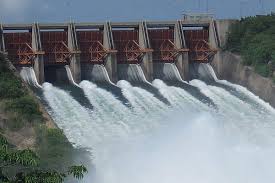Nigeria Hydrological Services Agency (NHSA) has announced that the Cameroonian authorities have released water from the Lagdo Dam in Cameroon.
The Director General of the agency, Umar Muhammed in a statement issued Tuesday said the French country would initiate controlled water releases starting today, 17 September 2023.
He added that the water discharge was anticipated to progressively escalate to 1000m³/s over the next seven days based on the inflow from the upstream Garoua River, which serves as the primary source into the reservoir and a significant tributary to the Benue River.
Muhammed noted: “The Nigeria Hydrological Services Agency wishes to notify the general public that the authorities of the Lagdo Dam in Cameroon have communicated to the agency that they will initiate controlled water releases at a rate of 100m³/s (8,640,000m³/day) starting today, 17 September 2023.”
He added that the dam operators have indicated that the planned water discharges would be gradual to avoid surpassing the conveyance capacity of the Benue River system and triggering substantial flooding downstream in Nigeria.
The Director General stressed that the overflow from the Lagdo Dam is projected to cease once there is a noticeable reduction in the flow into the Lagdo reservoir.
He added: “The agency unequivocally states that there is no need for alarm as major flooding downstream in Nigeria is not anticipated since the flow levels along the Benue River are still within cautionary limits.
“Nevertheless, it is of utmost importance for all states bordering the Benue River system, namely: Adamawa, Taraba, Benue, Nasarawa, Kogi, Edo, Delta, Anambra, Bayelsa, Cross River, and Rivers, along with the government at all levels (Federal, State, and Local Government Areas) to heighten their vigilance and implement appropriate preparedness measures to mitigate potential flooding impacts that may arise due to an increase in flow levels of our major rivers during this period.
“The agency will continue to diligently monitor the flow conditions of the transboundary Benue River and the national inland rivers, and consistently provide regular updates on water levels across major rivers to prevent further flood disasters.”





























